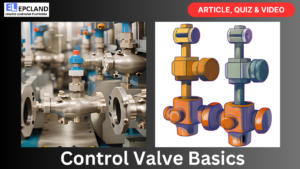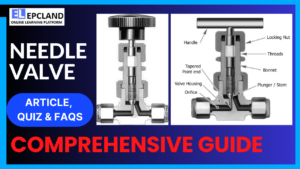1. Class I, Division 1
What characterizes Class I, Division 1 hazardous locations according to NEC and CEC?
Explanation: Class I, Division 1 locations are hazardous due to the continuous presence of flammable gases or vapors in sufficient quantities to produce an ignitable mixture.
2. Class II, Division 1
What defines Class II, Division 1 hazardous locations according to NEC and CEC?
Explanation: Class II, Division 1 locations are hazardous due to the presence of combustible dusts in sufficient quantities to produce an ignitable mixture.
3. Class III, Division 1
What characterizes Class III, Division 1 hazardous locations according to NEC and CEC?
Explanation: Class III, Division 1 locations are hazardous due to the presence of easily ignitable fibers produced during the processing of materials such as textiles.
4. Class I, Division 2
What defines Class I, Division 2 hazardous locations according to NEC and CEC?
Explanation: Class I, Division 2 locations are hazardous due to the presence of flammable gases or vapors that may frequently exist due to leakage or maintenance repair.
5. Class II, Division 2 (Confined Spaces)
What characterizes Class II, Division 2 hazardous locations in confined spaces according to NEC and CEC?
Explanation: Class II, Division 2 locations in confined spaces are not normally hazardous but may become hazardous due to the presence of combustible dusts in sufficient quantities.
6. Group F Atmosphere
Which material is associated with Group F atmospheric mixtures according to NEC and CEC?
Explanation: Group F atmospheric mixtures include carbon black and coal dust.
7. Additional Resources
Where can you find more information on the NEC and CEC classification of hazardous locations?
Explanation: For more information on the NEC and CEC classification of hazardous locations, you can refer to the National Electrical Code website and the Canadian Electrical Code website.
Short Article on Classification of Hazardous Locations
Classification of Hazardous Locations
National Electrical Code (NEC) and the Canadian Electrical Code (CEC) classification of hazardous locations:
Class I Locations
- Class I, Division 1: These locations are hazardous due to the presence of flammable gases or vapors that are continuously, intermittently, or periodically present in sufficient quantities to produce an ignitable mixture.
- Class I, Division 2: These locations are hazardous due to the presence of flammable gases or vapors that may frequently exist due to leakage or maintenance repair.
- Class I, Division 3: These locations are hazardous due to the breakdown of equipment that may release concentrations of flammable gases or vapors that could cause simultaneous failure of electrical equipment.
Class II Locations
- Class II, Division 1: These locations are hazardous due to the presence of combustible dusts that are suspended in the air in sufficient quantities to produce an ignitable mixture.
- Class II, Division 2: These locations are hazardous due to the presence of combustible dusts that may be present in dangerous quantities in confined spaces or during abnormal operations.
- Class II, Division 2: These locations are not normally hazardous, but may become hazardous due to the accumulation of dust during normal operations.
Class III Locations
- Class III, Division 1: These locations are hazardous due to the presence of easily ignitable fibers or flyings that are produced during the processing of materials such as textiles.
- Class III, Division 2: These locations are hazardous due to the presence of easily ignitable fibers or flyings that may accumulate in quantities sufficient to produce an ignitable mixture.
Atmospheric Mixtures
For purposes of testing, classification, and approval of electrical equipment, atmospheric mixtures are classified into seven groups (A through G) depending on the kind of material involved. The following is a table of the atmospheric mixture groups:
| Group | Material |
|---|---|
| A | Hydrogen |
| B | Gasoline, hexane, naphtha |
| C | Ethanol, methanol |
| D | Methane, propane |
| E | Metal dust |
| F | Carbon black, coal dust |
| G | Grain dust, sugar dust |
Additional Information
For more information on the NEC and CEC classification of hazardous locations, please refer to the following resources:
- National Electrical Code: https://www.nfpa.org/codes-and-standards/7/0/nfpa-70
- Canadian Electrical Code: https://www.csagroup.org/store/canadian-electrical-code-products/
You can also contact Harrington’s Technical Services department for assistance with testing, classification, and approval of electrical equipment.
Table of Contents
Don’t miss the Course on Effective Isometrics Management: Check Now
Enrollment Link
Recommended courses (Published on EPCLand)
- Complete Course on Piping Engineering
- Basics of Piping Engineering
- Piping Layout Engineering
- Piping Material Engineering
- Piping Stress Analysis
- Material Requisitions
- Piping Material Specifications
- Valve Material Specifications
- Plant Design & Layouts-OISD 118
- Isometric Management
Library of Technical Articles
Don’t miss out the collection of 15+ articles on following topics:
- Basics of Oil and Gas Industry
- Valves
- Testing
- Tank
- Piping Bulk Items
- Pipe
- Metallurgy
- Piping Materials
- Layout
- Instrumentation
- Heat Exchanger
- Type of Contracts
- Codes and Standards
- ASTM Standards
- Articles on Piping Specialty Items
Video details of Complete Course on Piping Engineering
Why Enroll in the EPCLand
Proven Track Record– PTR
Activities & Achievements before launching EPCLand
- Published more than 50+ short courses
- 3000+ Enrolments
- More than 3,500,00 Minutes of watch hours in the last 2 years
- 4000+ Students in 100+ Countries
- Rating of 4+ out of 5
- 1000+ YouTube Videos
- 8K+ Subscribers
What Students will Learn
- Codes & Standards of the Energy Sector
- Piping Material Engineering
- Piping Layout Engineering
- Stress Analysis
Interesting facts
- All the published courses have been developed by Industry Experts with more than 2 decades of experience
- Content is based on Practical experience and real-time problems.
- Content is designed and organized in such a manner that it can be easily grabbed.
- Complete website, Blogs and Quiz sections are Planned, Designed and published by myself (About me: Atul Singla)
- Complete flexibility of Time & Location, Students can access the content from anywhere & anytime
- Moreover, once enrolled, the content can be access as many times as you want, which helps in understand the fundamentals in a better way.
Conclusion
In conclusion, our courses are meticulously crafted by industry experts with over two decades of hands-on experience. The content is rooted in practical knowledge, addressing real-time problems. The material is thoughtfully designed and organized for easy comprehension. Every aspect, from the website to blogs and quizzes, has been planned, designed, and executed by Atul Singla, ensuring a comprehensive and seamless learning experience. With the flexibility of accessing the content at any time and from any location, students have the freedom to learn on their terms. Furthermore, enrollment grants unlimited access, allowing learners to revisit the material as often as needed, fostering a deep understanding of the fundamentals.



